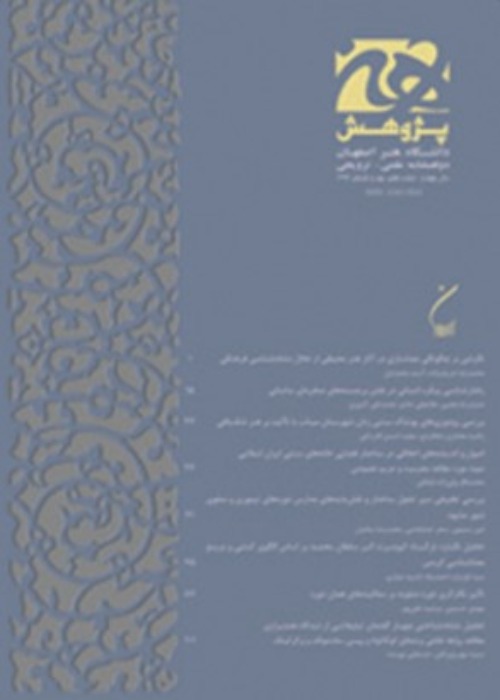A Comparative Study of the Patterns of Carpets in The Paintings of The Timurid Era of Iran with The Ottoman Holbein Carpets
With the beginning of the 8th century AH/14 AD, until the end of the 10th century AH/16 AD, one of the illustrious eras of Iranian carpets occurs, due to the importance of the stylistic changes of hand-woven carpets in this era, many ambiguities have been created in the quiddity of Iranian carpets due to the small number of existing examples. Despite the few references in this era, including the remaining carpets and paintings of the Timurid and Turkoman era, there are countless questions about the structure of Iranian carpets in this era and these ambiguities have caused non-Iranian experts in the field of carpet history to place the existence of carpets before the Safavid era in an aura of ambiguity. While it is possible to understand the stylistic connection between Iranian carpets and Anatolian carpets in this period of time by comparing the patterns of carpets in the paintings of this era with the examples of Anatolia, this research aims to compare the similarities between the carpets of the Timurid era of Iran (911-771 ah/1506-1370 AD) with the Holbein carpets of Turkey (about 8 to 12 AH/14 to 17 AD) in order to express the stylistic relationships of the Iranian Timurid carpets with Anatolian carpet is made in this period to answer the main question through deductive reasoning: What was the reason for the persistence of comparative traits in the Timurid and Ottoman era of Turkey? In this regard, the data of this research have been prepared by documentary method and theoretical saturation, and by classifying the comparative components of these simultaneous and temporal samples at the level of description, their deductive explanation has been done at the level of analysis. The results show that these comparative traits originally originated from Iran to Turkey and the form and content of the carpet is based on the socio-cultural context and ideologies of Turkish designers has acquired a new structure and meaning. Furthermore, this interaction between Iranian and Turkish artists is due to being in the environment, creating a common perception between the people involved and their participation in transferring, teaching, learning and then writing the carpet design; Therefore, the artists of both studies have played an important role in the education and continuity of these carpets.
- حق عضویت دریافتی صرف حمایت از نشریات عضو و نگهداری، تکمیل و توسعه مگیران میشود.
- پرداخت حق اشتراک و دانلود مقالات اجازه بازنشر آن در سایر رسانههای چاپی و دیجیتال را به کاربر نمیدهد.




